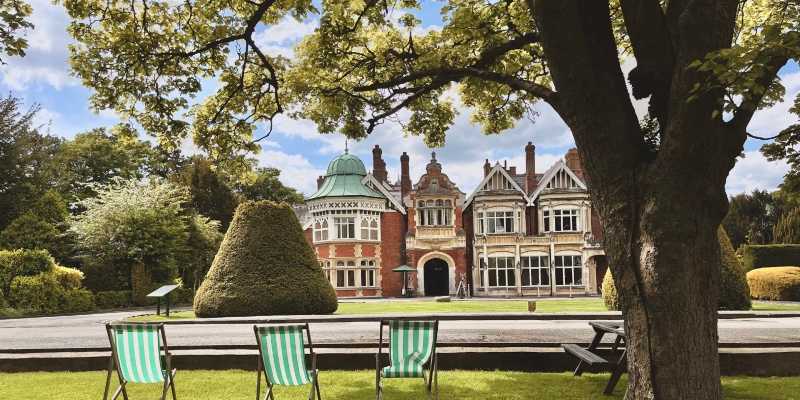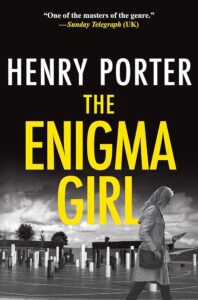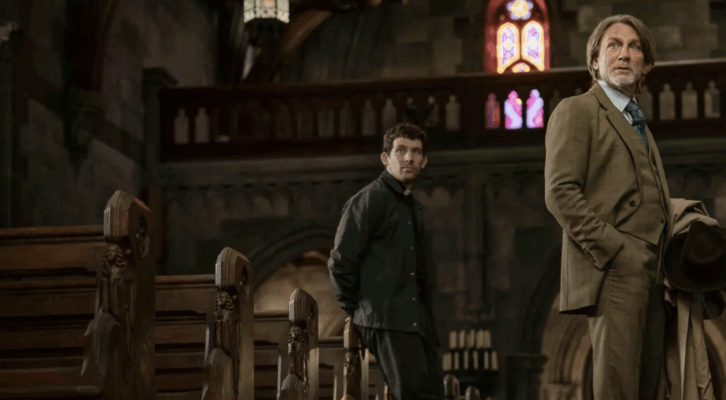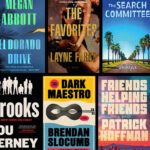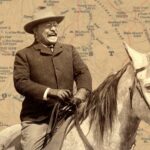When I’ve completed a long book, like The Enigma Girl, I often wonder where the story came from, for the truth is that the book is always so very different to what was hazily in my mind at the outset. For a writer like Frederick Forsyth, this will seem bizarre, because, as he once told me during a photoshoot for a magazine, he plans every scene on index cards before he starts writing and knows exactly what happens right up to the denouement. I have almost no idea of the way things will unfold, which means there are lots of surprises and many unnecessary diversions along the way—one reason I had to reduce the book from 180,000 to around 135,000 words over the winter of ’23 to ‘24.
Yet, there are advantages to my lack of method. Themes and subplots emerge as I allow myself to dive down rabbit holes during my rather haphazard research. These excursions are often a waste of time, but sometimes they become very important to the book. My obsession during the last days of lockdown with the Bronze Age archaeological sites of eastern England looked like a classic Porter dead end. But soon after returning from looking at the 3,000-year-old log boats near Peterborough and the Sea Henge in Norfolk – an ancient circle made of tree trunks that have been precisely dated to the spring of 2049 BC – I knew that the hero of The Enigma Girl, Slim Parsons, was lying low on an archaeological dig. And from her experience on that dig came important themes about loss and death.
Likewise, a Polish theme began to develop after my first visit to the UK’s wartime codebreaking centre at Bletchley Park. One day early in 2022, I travelled the 40 miles from my home in the Cotswold to Milton Keynes, with a rough idea that the New Town planned in the Sixties might be an original setting for a story involving my young MI5 undercover specialist. I didn’t know until I reached Milton Keynes that it contained Bletchley Park, the site of the heroic British effort to crack the Enigma enciphering machine during World War II. After crisscrossing the town in dense fog and becoming intrigued by the thoroughly un-British grid of boulevards, I had time to spare and decided to visit the Bletchley Park museum.
The story of the frantic work conducted in the huts that were hastily erected around an ugly Victorian mansion in the then village of Bletchley has become one of the key myths about Britain’s war against Germany. Miraculous feats were achieved at Bletchley, especially Alan Turing’s work on computing and the construction, by a man named Tommy Flowers, of the world’s first programmable electric computer – Colossus. But not until I wandered into the courtyard of the old stable block beside the mansion did I become aware of the vital role of Polish cipher experts in cracking Enigma. In an obscure part of the courtyard, there is memorial of an open book with the names Jerzy Rozycki, Henryk Zygalski, and Marian Rejewski carved into the stone.
Research on my phone while I was standing in front of the memorial revealed that during the 1930s the trio used mathematics to reverse engineer the commercial version of the machine and developed a mechanical device to calculate the Enigma settings that changed the German cipher every day. They called it the Bomba, possibly after their favourite ice cream desert, or because the machine made the sound of a ticking bomb. Their work saved the British codebreakers, Alan Turing and the arrogant genius Dilly Knox, two years of hard slog, not to mention tens of thousands of lives.
None of this had much to do with my book, which was to be set in the present day and was about the struggle between journalists bent on revealing the truth and the government and Big Money who want to bury it. But on that visit to Bletchley, I had the idea of a news website that was based in Milton Keynes and staffed by the descendants of people who worked at the Government codebreaking centre during the war – a gene pool of talent and brains that worries the authorities.
As I walked back to my car, I knew that my tough but thoroughly human, bisexual spy, Slim Parsons, would have Polish ancestry and, moreover, that she came directly from a line of spies, some of them Jews whose families had assimilated into Polish middle classes during the nineteenth century.
Those three Polish mathematicians were excluded from the work at Bletchley, but just after the invasion of Poland by Germany in September 1939, Major Maksymilian Ciężki, head of Polish Cipher Bureau’s German section, did the Allies a crucial service. He and a small company of men went behind enemy lines and reached the secret codebreaking facility at Pyry, where all the evidence of the Polish success with the Enigma machine was waiting to be seized by the Wehrmacht. If the Germans had discovered that he and his colleagues had broken Enigma, a crucial advantage would have been lost and the war would certainly have taken many different turns. The radio mast used to intercept German radio transmissions was blown up, all the secret papers and equipment burned, and the Enigma rotors and machines were spirited away by Ciężki.
So, my unplanned visit to a deserted museum provided many fundamentals of the book and, when, later, I read about the raid on Pyry, I knew that this was precisely the sort of action Slim’s ancestors would have taken. I was discovering my hero in history that long preceded her existence, which is a strange way of building a backstory, yet it was how I came to know the forces that were responsible for her courage and sense of justice.
The Polish theme wasn’t done with me. That winter, which seemed particularly cold and damp even for Britain, I hiked through the dismal countryside near where I live to an old prisoner of war camp that was hurriedly built at the same time as the sprawling network of huts at Bletchley Park. It was never used for German POWs but instead became the home of hundreds of displaced Polish soldiers and their families after the war. Just a few hundred yards from where I write now, there is a cemetery with a section reserved for the people who never returned to Poland and died at the camp. I find it rather moving that over fifty years after the closure of what became known as the Northwick Park Resettlement Camp, fresh flowers are still placed on the graves of the people who lived in the camp.
I circled the camp, which is now a rundown business park, and came across another memorial, hidden from the track by a low stone wall and privet hedges. I had often passed the small enclosure but never ventured inside. How glad I am that I went in and crouched down to read a plaque dedicated to servicemen and their families who lived at the camp. “Their ordeal,” reads the inscription, “started with deportation to Siberia in 1940. After their release, the Polish Army was formed in 1942. Following retraining in the Middle East, they contributed greatly to the Allied Victory of World War II. In 1942 most of the civilians were separated from the soldiers in Persia and transferred to East African countries to be returned in Great Britain during 1948.”
Those few lines contain one of the great forgotten stories of the war – a whole army and thousands of civilians seized and imprisoned by Stalin then let go when Germany attacked Russia in 1942. Thousands of Polish men and women walked across the Soviet Union then boarded ships to cross the Caspian Sea, only to begin another journey through present day Iran. Led by General Wladyslaw Anders, the soldiers became a ferocious fighting force. Some of them choose to stay in Palestine and fight for the nascent Israel, others joined the Allied forces in the Italian campaign and fought all the way up Italy, many being decorated for the bravery at Monte Cassino.
And when this epic journey ended in the quiet English countryside in 1945, these extraordinarily brave and hardy Polish soldiers were forced to wait another three years to be reunited with those family members who had survived a Siberian ordeal of their own. The resilience of both men and women is astonishing.
What relevance does this have to a thriller set in 2025 about a spy sent to infiltrate a troublesome website? Everything I have written here was used in the book. Apart from giving Slim what I believe to be a rich backstory, I was pleased to be able to write about the forgotten heroes who cracked the commercial version of Enigma, who saved the secret from the clutches of the Nazis, and who crossed Russia and the Middle East to fight for freedom again.
I never know where I’m going to find material, which is both exciting and unnerving. I am constantly aware of the things I must be missing, whole stories which may be out there but are lost to me because I failed to follow my nose, or take a trip, or look behind a stone wall and some privet hedges on a rather dismal day in Gloucestershire.
***

